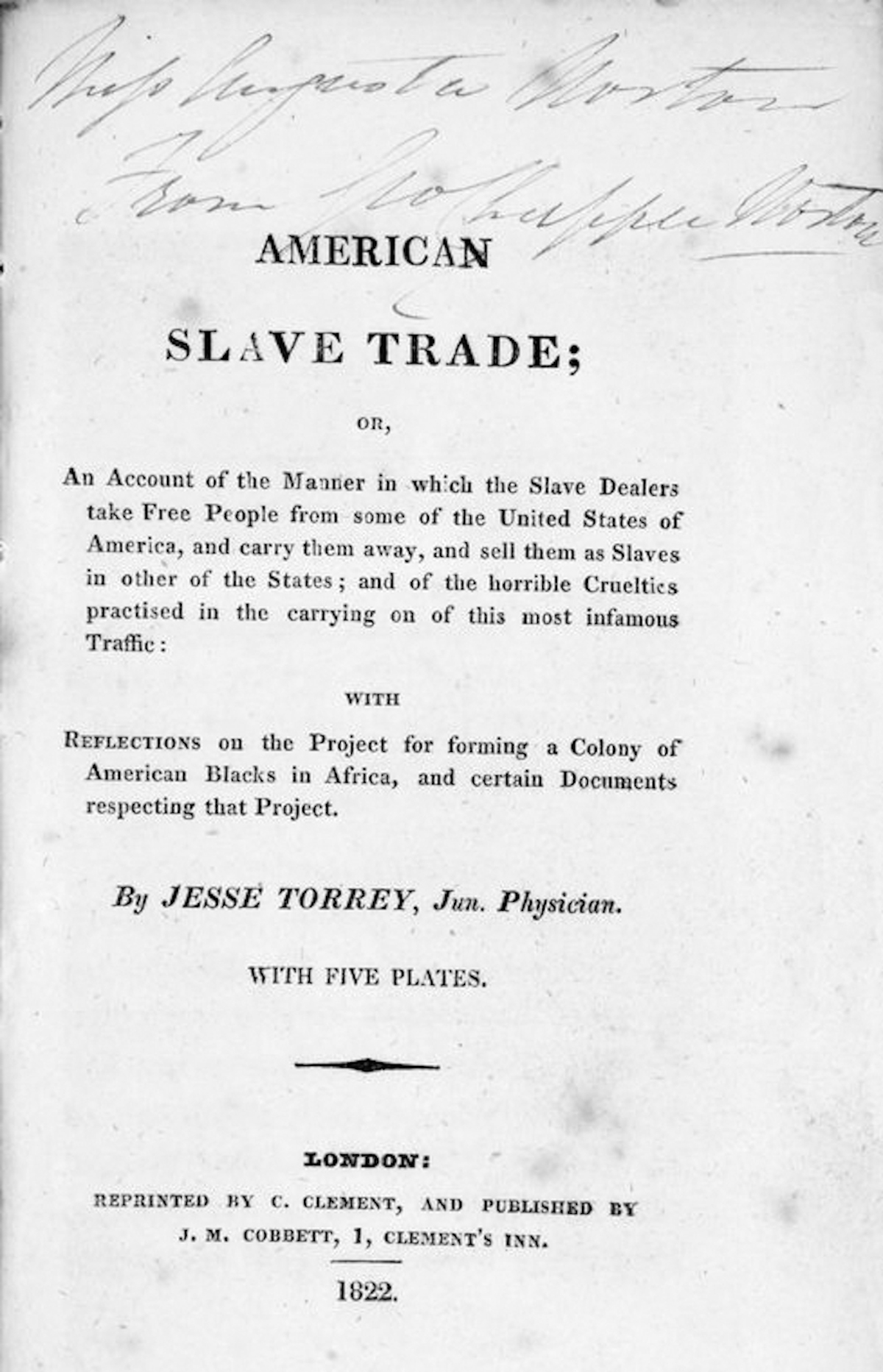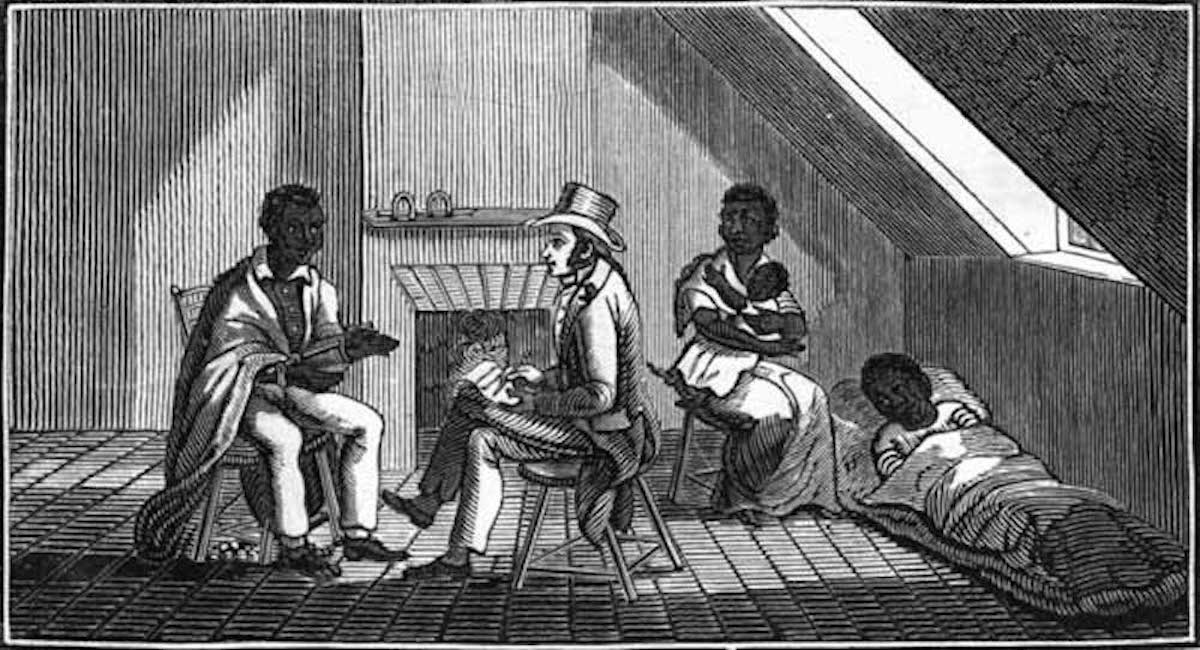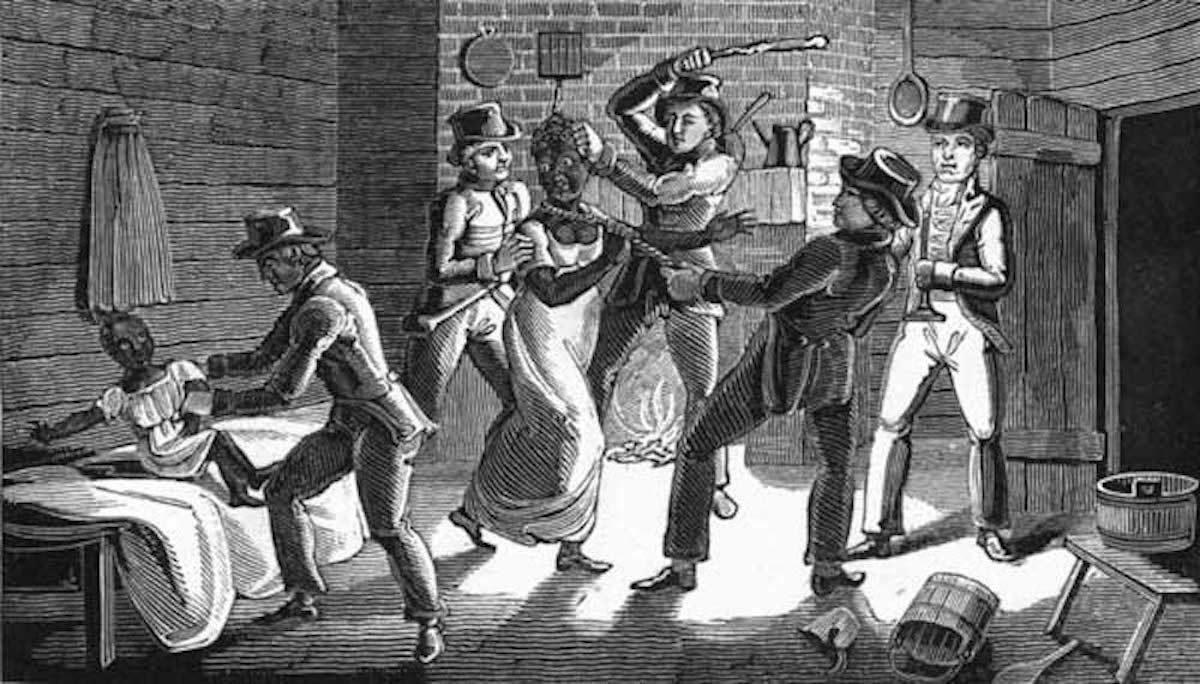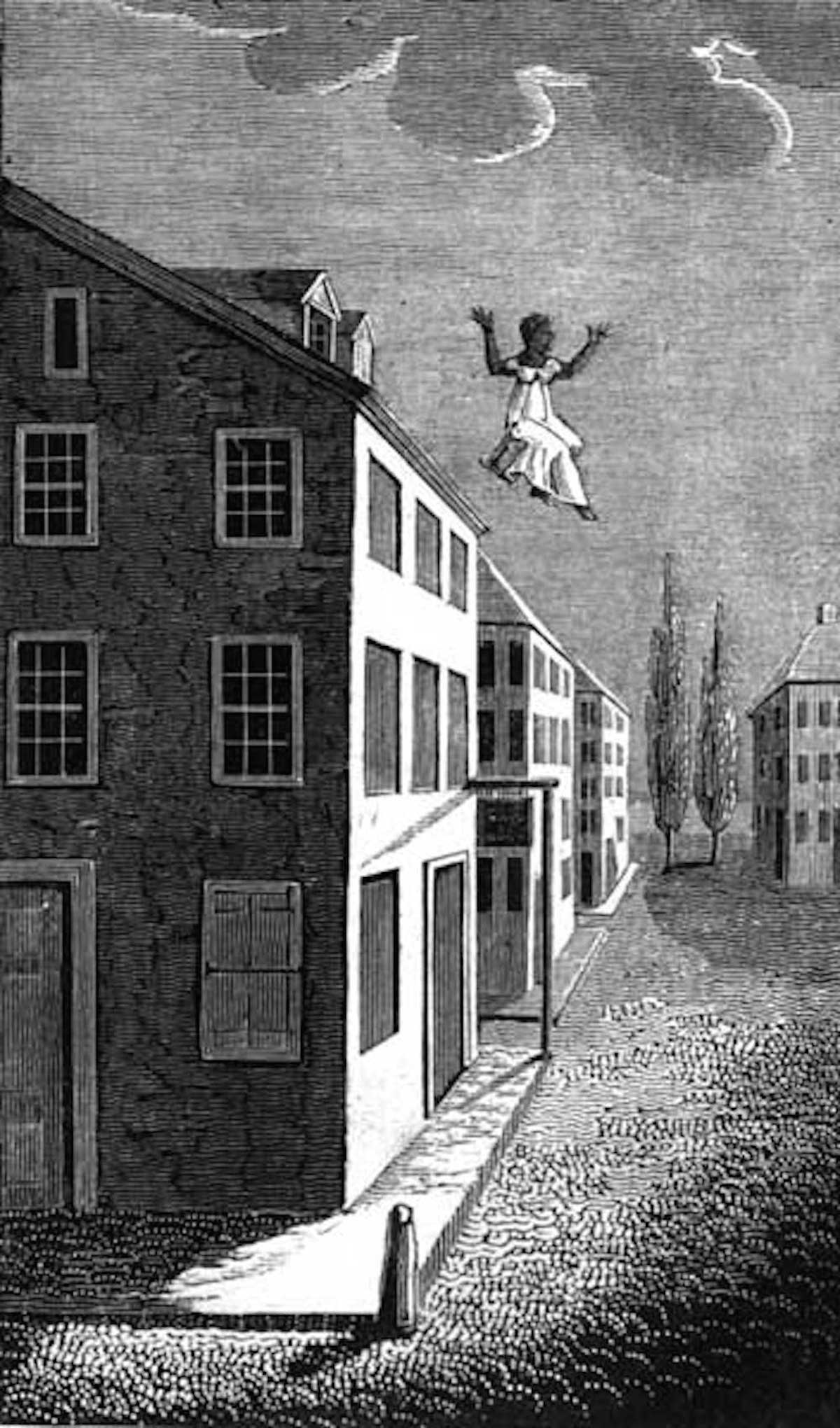In 1817, physician Jesse Torrey’s book “AMERICAN SLAVE TRADE” was published in Philadelphia. The book begins with the following:
An Account of the Manner in which the Slave Dealers take Free People from some of the United States of America, and carry them away, and sell them as Slaves in other of the States; and of the horrible Cruelties practised in the carrying on of this most infamous Traffic:
The book contains five illustrations, which we reproduce hereunder. Together with extracts from the book, the picture presented is one of an enduring horror.
While at a public house, in Fredericktown, there came into the bar-room (on Sunday) a decently dressed white man, of quite a light complexion, in company with one who was totally black. After they went away, the landlord observed that the white man was a slave. I asked him, with some surprise, how that could be possible? To which he replied, that he was a descendant, by female ancestry, of an African slave. He also stated, that not far from Fredericktown, there was a slave estate, on which there were several white females of as fair and elegant appearance as white ladies in general, held in legal bondage as slaves…
I have received direct information from a gentleman who witnessed the fact, that in one of the slave states, a white man, having married one of his female slaves, after she had borne him several children, sold the whole of them together as he would a drove of cattle; and it is said such instances are frequent. A gentleman brought with him from the southward to Philadelphia, (the city of brotherly love,) his half brother, the son of his father by a slave, and attempted to sell him! He was happily prevented from executing his sacrilegious design by the interposition of a respectable citizen, who also procured the legal restoration of freedom to the darker faced brother.
As two persons were returning from the horse races, a few miles north of the city of Washington, eight or ten years ago, they met on the road a free man of colour, who resided in the vicinity. They seized him, and bound him with ropes. His protestations that he was free, and his entreaties that they would accompany him to the house, (but about half a mile distant,) where his wife resided, and where he could satisfy them of his freedom, were in vain. Having fastened him by a rope, to the tail of one of their horses, they were seen, by a citizen, who met them on the road dragging him in this manner, and beating him to make him keep pace with the horses. He cautioned them, and begged of them not to kill the black man;—but one of the ruffians plucking a stake from the fence, and threatening with horrid oaths to knock him down, he found it necessary to retire for his own safety:—a few miles farther along, on the following morning, this poor African was found by the side of the road, dreadfully bruised, and his eyes bloodshotten,—dead!
She stated, that the man in whose house she resided, together with his brother, and three other persons, came into the room (a kitchen,) where she was in bed, seized and dragged her out;—fastened a noose round her neck, to prevent her from screaming, and attempted to blindfold her, which she resisted with such violence, that she prevented them from succeeding. She said, while one of them was endeavouring to fix the bandage over her eyes, that she seized his cheek with her teeth, and tore a piece of it entirely off. She said one of them struck her head several times with a stick of wood, from the wounds of which she was almost covered with blood. She shewed me a large scar upon her forehead, occasioned by one of the blows, which a gentleman, who saw her the day previous to her seizure, has since informed me was not there before. She said, while she was struggling against them, and screaming, the man in whose house she lived bawled out, “Choke the dead bitch! don’t let her halloo—she’ll scare my wife!” Having conquered her by superior force, she said they placed her with the child in a chaise, (her description of which, with the horse and the driver, who was one of the victors, corresponds precisely with that given by the mulatto man of the carriage, &c. by which he also was conveyed,) and refusing to dress herself, three of them, leaving the two who belonged to the house, carried her off in the condition that she was dragged from bed, to a certain tavern in Maryland, and sold them both to the Man-Dealer, who brought them to the city of Washington.
She stated, that one of her captors drove the carriage, and held the rope which was fixed to her neck, and that one rode each side, on horseback.—That, while one of them was negociating a bargain with her purchaser, he asked her who her master was; and, replying that she had none, her seller beckoned to him to go into another room, where the business was adjusted without troubling her with any farther inquiries. She stated, that her purchaser confessed, while on the way to Annapolis, that he believed she might have had some claim to freedom, and intimated that he would have taken her back, if the man of whom he bought her had not ran away; but requested her, notwithstanding, to say nothing to any body about her being free, which she refused to comply with. She affirmed, that he offered her for sale to several persons, who refused to purchase, on account of her asserting that she was free. She stated, that her purchaser had left her in Washington for a few weeks, and gone to the Eastern Shore, in search of more black people, in order to make up a drove for Georgia.
…in the evening of the 19th December 1815, that a black woman, destined for transportation to Georgia with a coffle, which was about to start, attempted to escape, by jumping out of the window of the garret of a three story brick tavern in F. street, about day-break in the morning; and that in the fall she had her back and both arms broken! I remarked, that I did not wonder that she did so; and inquired, whether it had not killed her? To which he replied, that he understood that she was dead, and that the Georgia-men had gone off with the others…
Supposing this to have been a recent occurrence, and being desirous of seeing the mangled slave before she should be buried, I proceeded with some haste early on the following morning, in search of the house already mentioned. Calling at a house near the one at which the catastrophe occurred, I was informed, that it had been three weeks since it took place, and that the woman was still living. Having found the house, I desired permission of the landlord to see the wounded woman; to which he assented, and directed a lad to conduct me to her room, which was in the garret over the third story of the house. On entering the room I observed her lying upon a bed on the floor, and covered with a white woollen blanket, on which were several spots of blood (from her wounds,) which I perceived was red, notwithstanding the opacity of her skin. Her countenance, though very pale from the shock she had received, and dejected with grief, appeared complacent and sympathetic. Both her arms were broken between the elbows and wrists, and had undoubtedly been well set and dressed; but from her restlessness she had displaced the bones again, so that they were perceptibly crooked. I have since been informed by the Mayor of the city, who is a physician, and resides not far distant from the place, that he was called to visit her immediately after her fall, and found, besides her arms being broken, that the lower part of the spine was badly shattered, so that it was doubtful whether she would ever be capable of walking again, if she should survive. The lady of the Mayor said she was awakened from sleep by the fall of the woman, and heard her heavy struggling groans.
I inquired of her, whether she was asleep when she sprang from the window. She replied, “No, no more than I am now.” Asking her what was the cause of her doing such a frantic act as that, she replied, “They brought me away with two of my children, and wouldn’t let me see my husband—they didn’t sell my husband, and I didn’t want to go’;—I was so confused and ‘istracted, that I didn’t know hardly what I was about—but I didn’t want to go, and I jumped out of the window;—but I am sorry now that I did it;—they have carried my children off with ’em to Carolina.” I was informed that the Slave Trader, who had purchased her near Bladensburgh, (she being a legal slave,) gave her to the landlord, as a compensation for taking care of her. Thus her family was dispersed from north to south, and herself nearly torn in pieces, without the shadow of a hope of ever seeing or hearing from her children again!

Barbarity committed on a free African, who was found on the ensuing morning, by the side of the road, dead!
One evening while writing notes concerning the occurrence just mentioned, a lad, sitting in the same room with me, was studying his lessons in Goldsmith’s Abridgment of Geography; in which I noticed he read these words:—”The United States are celebrated for the excellence of their constitution, which provides for political liberty and individual security. The inhabitants are justly famed for their ardent love of freedom.” Immediately after reading those paragraphs, he addressed me, without knowing on what subject I was occupied, thus: “Why, how can it be said that the[Pg 66] inhabitants of the United States love liberty, while they hold almost a whole nation of people in a state of bondage and ignorance?” I endeavoured to explain to him this puzzling problem, by replying, that “by the inhabitants was meant the white population of the United States, and the liberty which they ardently love is probably their own liberty, which they appear to care more about than they do about the liberty of black men.”
Via: NYPL
Would you like to support Flashbak?
Please consider making a donation to our site. We don't want to rely on ads to bring you the best of visual culture. You can also support us by signing up to our Mailing List. And you can also follow us on Facebook, Instagram and Twitter. For great art and culture delivered to your door, visit our shop.













